Danish Oil and Wood Finishes for Loom Maintenance
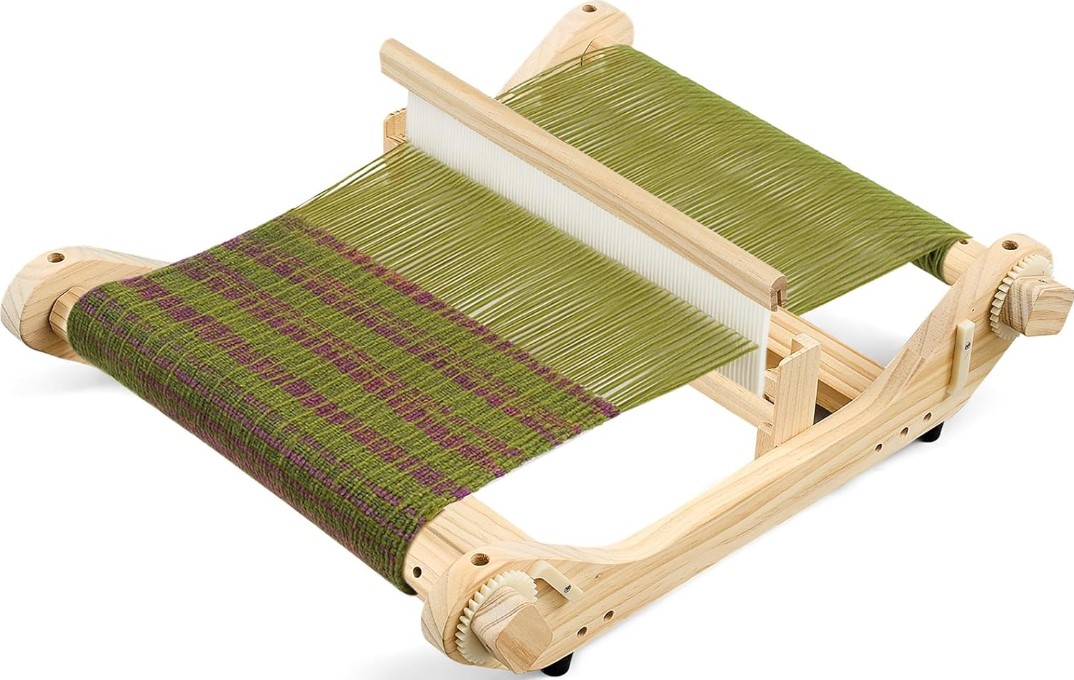
The great divide in rigid heddle looms: finished or unfinished. Nobody tells you this when you're shopping, but about half the looms on the market arrive as bare wood. Raw. Naked. Ready to absorb whatever moisture, coffee, or finger oils come near them. The product descriptions say "unfinished" like it's a feature, not a homework assignment. Once you've got your loom properly finished and protected, learning to read weaving patterns opens up the full range of what you can create with it.
So you've got bare wood that needs protection. The question becomes: protection from what, and with what? The answer involves a century of industrial chemistry, some questionable marketing, and crafters making do with whatever doesn't evacuate their cats from the apartment. Welcome to the wild world of wood finishes, where nothing is quite what it says on the bottle.
Types of Finishes: What They Are and What They Do
Danish Oil: The Identity Crisis in a Can
Danish oil isn't Danish and barely contains oil. Let that sink in. The Danes didn't invent it. They don't use it more than anyone else. There's no Danish standard for what goes in it. In fact, if you bought five different brands of "Danish oil" and ran them through a chemistry lab, you'd get five completely different recipes. The only thing they'd have in common is that someone in marketing decided "Danish" sounded trustworthy and Nordic and like the kind of people who'd know about wood.
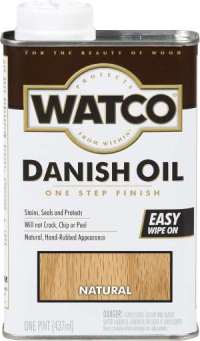
Check price on Amazon for Watco Danish Oil
Take Watco Danish Oil – probably sitting on more craft room shelves than any other finish. The label promises it "creates rich, warm glow of a hand-rubbed finish" and dries in 6 hours. What it doesn't mention is that "Natural" color means it'll yellow your pine loom over time, or that "dries to touch" at 6 hours doesn't mean "cured" – that takes days. The "blended oil & varnish" formula they brag about? That's the standard one-third/one-third/one-third recipe everyone uses, dressed up in marketing speak.
Take Furniture Clinic Danish Oil – marketed as "non-toxic natural satin finish" for your oak and teak. Customers report an "overwhelming smell" that's unpleasant. That smell? That's petroleum distillates doing what petroleum distillates do. The "natural" product that makes people open windows and evacuate rooms. Some say it dries quickly, others say it takes forever – classic sign of inconsistent formulation or people discovering that temperature and humidity exist. But hey, "heritage organizations" use it, though they won't tell you which ones.
What's actually in that bottle labeled Danish oil? Usually about one-third oil (tung or linseed), one-third varnish (polyurethane or alkyd resin), and one-third mineral spirits (petroleum distillates). It's essentially varnish that someone thinned out and added oil to so it penetrates wood instead of sitting on top like a plastic raincoat. Most manufacturers won't tell you their exact formula. Trade secret, they say. What they mean is: formulations change based on material costs.
The genius – and it is genius – is that this mongrel mixture does something each component alone can't. The mineral spirits carry the oil and varnish deep into the wood fibers. The oil polymerizes (fancy word for "gets hard") when exposed to oxygen. The varnish adds a protective layer that actually bonds with the oil as it cures. You get penetration AND protection. Your loom gets fed AND armored.
Pure Tung Oil: The Marathon Runner
Pure tung oil: Takes five coats minimum. Each coat needs 2-3 days to dry. Does the math – that's two weeks of finishing. But it's food-safe, water-resistant, and repairable. Scratches disappear with another coat. No plastic involved. Craftspeople with time love it. Furniture factories spraying fifty tables a day think two weeks per piece is financial insanity.
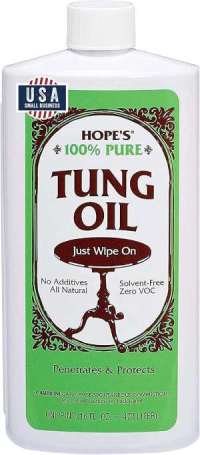
Check price on Amazon for HOPE'S 100% Pure Tung Oil
The real deal exists – HOPE'S 100% Pure Tung Oil is actually pure tung oil, not the "tung oil finish" imposters. One of the few products where the label matches the contents. Reddit's tung oil evangelists swear by brands like this, applying those legendary thin coats over days until their looms glow like ancient temples.
Boiled Linseed Oil: The Sticky Classic
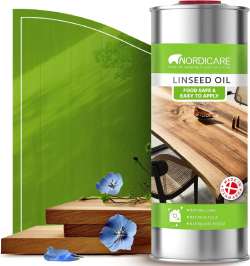
Check price on Amazon for Nordicare Boiled Linseed Oil
Boiled linseed oil: Cheap, available everywhere, dries in a day. Also turns slightly yellow over time, never fully hardens, and attracts dust like a magnet. Every antique loom you've seen with that dark, slightly sticky finish? That's fifty years of linseed oil applications. It never really stops being slightly tacky.
Shellac: The Bug Juice
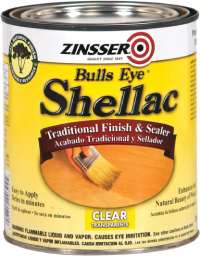
Check price on Amazon for Bulls Eye Shellac
Shellac: Bug secretions dissolved in alcohol. Seriously. The lac beetle secretes resin that humans have been harvesting for 3,000 years. It dries in minutes, not hours. It's repairable with more shellac. It's non-toxic once the alcohol evaporates. It also dissolves instantly if you spill alcohol on it. Your loom versus a glass of wine? The wine wins.
Lacquer: The Professional's Choice
Lacquer: Dries in 30 minutes, hard as rock, crystal clear. Also requires spray equipment or excellent brush technique, off-gasses enough to require a respirator, and cracks if the wood moves too much. Piano finishers use it in professional spray booths. Home crafters without proper ventilation equipment avoid it.
Paste Wax: The Makeup
Paste wax: Carnauba (from palm leaves) or beeswax mixed with solvents. Goes on easy, buffs to a shine, smells nice. Also provides approximately zero actual protection. It's makeup for wood. Your loom looks great until you actually use it, then the wax wears off wherever you touch it. Museums use it on furniture nobody sits in.
The small makers – the ones selling at fiber festivals – use everything. Tung oil because it's traditional. Danish oil because it's easy. Friction polish (shellac and oil rubbed in while the lathe spins) because it looks impressive when customers are watching. One maker in Vermont uses nothing but beeswax and swears by it. Another in Oregon uses yacht varnish designed for boats. Both have customers who insist their method is best.
The Chemistry Nobody Explains
Linseed oil – the base of most Danish oils – comes from flax seeds. Yes, the same plant that makes linen. Humans have been finding uses for every part of this plant for 30,000 years. The oil contains linoleic and linolenic acids, which are dying to react with oxygen. Leave raw linseed oil on wood and it'll polymerize... eventually. Like, check back in six months eventually.
So manufacturers boil it. Not just heat it – they literally boil it with metal salts (usually cobalt or manganese) that act as catalysts. Now it's "boiled linseed oil" even though the stuff you buy has never been boiled. It's been chemically modified at room temperature to act like it was boiled. The metal salts make it dry in 24 hours instead of 24 weeks. This is the kind of lying that's so standardized we don't even call it lying anymore.
Tung oil, the fancier option, comes from the nuts of the tung tree. It dries harder than linseed, penetrates deeper, and resists water better. Pure tung oil is thick like honey and takes forever to dry. "Tung oil finish" in stores is usually 0% actual tung oil – it's just varnish with marketing aspirations. Formby's Tung Oil Finish? Varnish. Minwax Tung Oil Finish? Varnish. The Federal Trade Commission doesn't care because technically they're not claiming it IS tung oil, just that it's a "tung oil finish," whatever that means.
Polyurethane – the varnish component – is plastic. Literal plastic. It's what they make skateboard wheels out of. When you put polyurethane on wood, you're essentially shrink-wrapping it in transparent skateboard material. The petroleum-based version off-gasses VOCs (volatile organic compounds) that'll make you dizzy if you don't ventilate. The water-based version doesn't, but it also doesn't penetrate wood the same way. Physics is annoying like that.
What Actually Happens to Wood
Untreated wood is basically a bundle of straws. Microscopic straws, but straws nonetheless. Each fiber is a hollow tube that once carried water up the tree. Leave these tubes empty and they'll fill with whatever's available – moisture from the air, oils from your hands, that coffee you just spilled. Wood moves. It swells when humid, shrinks when dry. A rigid heddle loom can change dimensions by an eighth of an inch between summer and winter. That's enough to make parts stick or create gaps where there shouldn't be any.
Oil fills those tubes. It soaks in, polymerizes, and becomes a solid that still flexes with the wood. It's like the difference between a dry sponge and a damp one – both can compress, but one won't crack. The oil doesn't stop wood movement, it just makes it happen more slowly and evenly. Your loom still breathes, it just takes smaller breaths.
Varnish does something different. It seals the surface. Creates a barrier. Water beads up instead of soaking in. Scratches hit the varnish instead of the wood. UV light degrades the finish instead of bleaching the timber. It's sacrificial armor – it takes the damage so the wood doesn't have to.
Danish oil tries to do both. The oil component penetrates and feeds the wood fibers. The varnish component hardens into a protective layer. The mineral spirits evaporate, leaving behind this oil-varnish hybrid that's soaked into the top few millimeters of wood. It's not as protective as pure varnish, not as penetrating as pure oil, but it's easier to apply than either and fixes faster when you inevitably scratch it.
The Application Reality
The application process crafters typically follow: They sand to 220 grit even though 150 would be fine because someone on a forum said higher numbers are better. They apply Danish oil with a rag that'll spontaneously combust if not disposed of properly (the polymerization reaction generates heat – enough to start fires). They wait 15 minutes, then wipe off the excess. They wait 24 hours. They repeat. Maybe a third time if they're feeling thorough.
The first coat penetrates deepest. The oil component soaks into those empty wood fibers, pulled in by capillary action. The wood darkens – what woodworkers call "popping the grain." Cherry turns deep red. Walnut goes chocolate. Pine turns... slightly less pale.
The second coat penetrates less because the tubes are already partially filled. It starts building that surface layer. You can feel it – the wood goes from rough to smooth, from matte to slightly shiny. This is when people get excited and add too much, thinking more coats equals more protection. After the third coat, you're basically just adding layers on top. Might as well use varnish at that point.
Temperature matters. Below 60°F, Danish oil turns thick and won't penetrate. Above 90°F, it flashes off too fast – the mineral spirits evaporate before carrying the oil deep enough. Humidity matters too. High humidity slows drying. Low humidity speeds it up but can cause the finish to crack. There's a sweet spot around 70°F and 50% humidity where everything works like the can promises. Most of us don't live in that sweet spot.
The Maintenance Schedule Nobody Follows
The conventional wisdom says re-oil annually. Here's what actually happens: People oil their new loom because it's new and they're excited. They oil it again maybe six months later because they remember they're supposed to. Then they forget for three years until the wood looks dry and they panic.
Reddit tells a different story. One person used Ashford wax on their Louet Erica at their kitchen table in winter – couldn't open windows, cats wandering around, needed something that wouldn't kill everyone. The 75g jar was enough for the entire loom and stand. Another used Minwax paste wax, one coat, done. "Nice, subtle satin finish," they said. The tung oil devotees show up talking about ten-year-old Ashford spinning wheels that still look beautiful, though they admit to "lots of sanding, days of dry time between coats." The phrase "thin coats" appears in every tung oil discussion like a religious mantra.
The reality is that crafters finish their looms based on their living situation, not what's optimal. Apartment dwellers with cats use paste wax because Danish oil fumes would evacuate the building. Someone with a garage uses lacquer in July with all doors open. Someone else discovers their unfinished Schacht has been sitting bare for two years, panics, and slaps on whatever's at Home Depot.
Wood tells you when it needs oil. It looks thirsty – lighter in color, slightly rough to the touch. The grain seems raised. This happens faster in dry climates, near heating vents, in direct sunlight. A loom in Phoenix might need oil every six months. The same loom in Seattle might go two years.
The reapplication process crafters actually use: They notice the wood looks dry. They dig out that quarter-full can of Danish oil from three years ago. It's partially solidified. They add mineral spirits to thin it. They apply one coat, promise themselves they'll do another tomorrow, forget, and call it good enough. The loom survives fine.
What the Bottles Don't Tell You
Danish oil expires. The metal driers break down, the oil goes rancid, the varnish separates. That can you've had for five years? It's probably bad. It'll stay tacky forever instead of drying. You'll end up with a loom that feels like fly paper. The manufacturers don't put expiration dates because they know people would throw out perfectly good product after a year. Also because they want you to have this exact problem and buy more.
Different brands often aren't compatible. Watco uses one type of resin, Deft uses another. Layer them and they might not bond. Or they might bubble. Or cloud. Or stay soft. Nobody knows until it's too late. Crafters who switch brands typically sand everything down between switches.
"Natural" Danish oil isn't. Tried & True makes a version with "no petroleum distillates." They use citrus solvent instead. D-limonene, extracted from orange peels. Sounds lovely and ecological until you learn it's processed with the same industrial chemistry as petroleum. It's also a skin sensitizer – use it enough and you can develop an allergy to oranges. Nature isn't always nicer.
Spontaneous combustion is real. Wadded-up rags with Danish oil generate heat as they cure. Enough heat to ignite. Fire departments respond to these calls regularly. Crafters learn this the exciting way when their garbage can starts smoking. Rags spread flat to dry or submerged in water prevent this. This isn't paranoia, it's chemistry.
The Bottom Line in Craft Rooms
Most loom finishes are good enough. The Danish oil everyone uses isn't optimal for anything, but it works for everything. It protects wood enough to prevent major problems, penetrates enough to stabilize the fibers, and forgives amateur application well enough that anyone can do it. One coat gets you functional. Three coats gets you protected. Mistakes sand out easily.
Pure tung oil creates the "forever finish" – completely repairable, food-safe, ages beautifully. Those Reddit posts about 10-year-old wheels that still look amazing? That's what two weeks of thin coats gets you. Each scratch disappears with another coat. No plastics involved. The time investment pays off in a finish that actually improves with age.
Paste wax works when nothing else will – apartments with no ventilation, houses with curious cats, winter projects at kitchen tables. It's barely protection, more like wood makeup, but it's better than bare wood and won't evacuate the building. Crafters use it now, plan to "properly" finish later, then discover their loom works fine anyway.
Pre-finished looms solve the problem by eliminating it. That factory lacquer or conversion varnish lasts years before needing attention. You pay more upfront to avoid the chemistry experiment entirely.
The obsessives using five coats of pure tung oil aren't wrong – their finish is objectively superior. The pragmatists slapping on one coat of whatever's on sale aren't wrong either – their looms work fine. The difference is mostly aesthetic and philosophical. Both camps weave the same cloth.
What matters is that wood gets something. Even paste wax is better than nothing. Even expired Danish oil provides some protection. The untreated loom will still work, it'll just gradually get grimy and eventually crack. But that takes decades, not months.
The chemistry in those bottles – the polymerizing oils and suspended plastics and evaporating solvents – is genuinely impressive. Humans figured out how to turn flax seeds and tree sap and petroleum into a finish that protects wood while letting it move. We put it in a can labeled with a country that had nothing to do with it and sell it to crafters who don't really care what's in it as long as their loom looks nice.
That's the real truth about wood finishes. They're all compromises between protection and penetration, durability and repairability, ease and effectiveness. Danish oil just happens to be the compromise most people can live with. Even if it's neither Danish nor exactly oil.